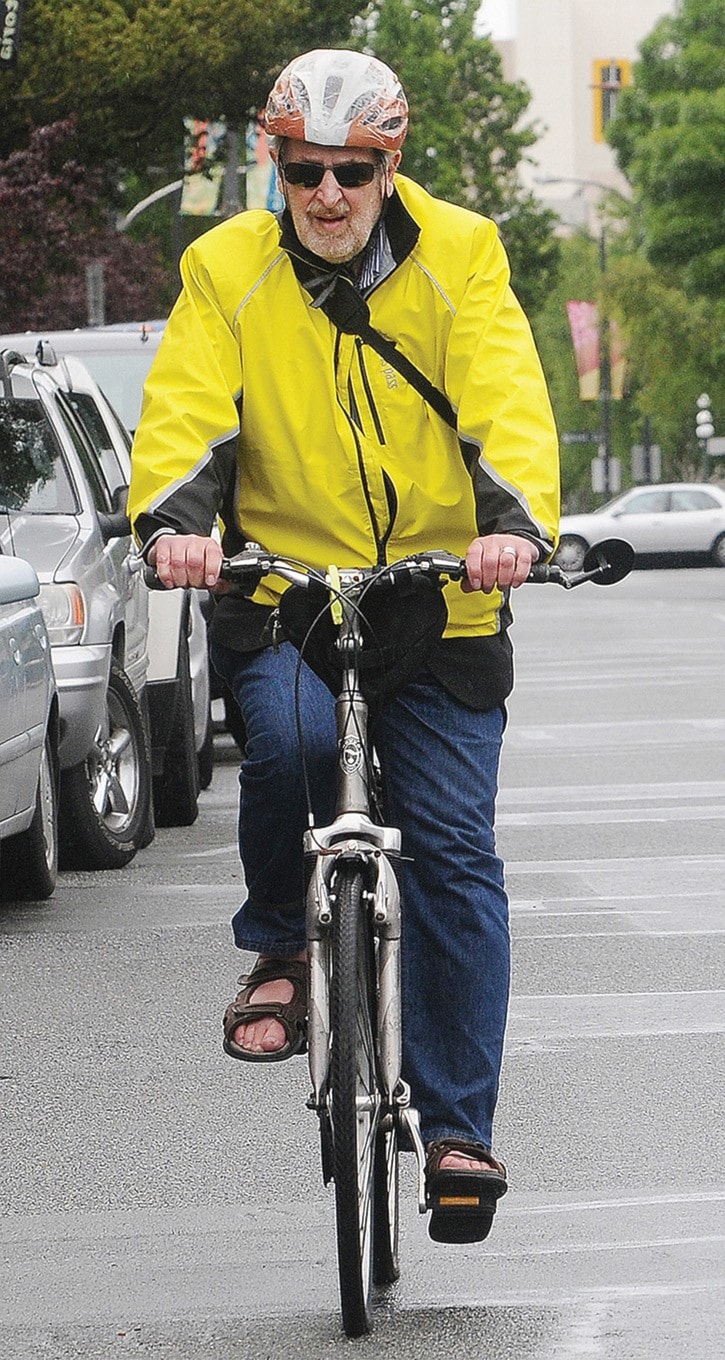As the annual Bike to Work Week winds down in Greater Victoria, organizers are encouraged by early reports suggesting this year’s participants will surpass 2012 numbers.
More than 600 teams and 7,000 people are participating in the event this year, adding fuel to the City of Victoria’s “cycling capital of Canada” label, proudly referenced on its website.
But is Victoria really the cycling city it so willingly purports itself to be?
The title is largely attributable to 2006 Statistics Canada numbers that show about 9,000 people – roughly five per cent of daily commuters in the Capital Region – reported biking to work.
In comparison, only 1.6 per cent of Metro Vancouverites reported cycling to work (numbers from the 2011 census won’t be released until the end of June).
A mild climate, relatively flat topography and a compact urban area account for higher cycling usage in the region, but Victoria’s stunted 25 kilometres of painted bike lanes continue to keep more cautious commuters from taking the leap from car to bicycle, said Ray Straatsma, Greater Victoria Cycling Coalition board member.
“The mode share regional numbers don’t tell the whole story,” he said. “If you take those numbers in isolation, Victoria is still the highest (for cycling commuters) … But if you go into neighbourhoods, you start to see cycling usage between seven, eight and nine per cent.”
Those higher percentages are shown in Victoria, Vancouver and other Canadian neighbourhoods as well, said Straatsma, who cycles 15 minutes to work each day in Saanich.
CRD core municipalities should focus on the “interested, but concerned” cyclists who don’t want to take the risk of sharing the road with vehicle traffic, he said.
Each year over the past five years, an average of 280 cyclists have been injured in collisions with vehicles on Vancouver Island, according to statistics kept by ICBC.
“But if you provide people the right kind of (cycling) infrastructure, they will use it,” Straatsma said. CRD numbers suggest usage could rise to 25 per cent of city trips with protected bike lanes.
Part of the difficulty for city planners and councillors is a definitive and reliable count of daily bicycle commuters – apart from Statistics Canada numbers –doesn’t exist, a void the CRD is working to fill with its newly expanded cycling count program.
The program will see volunteers spread throughout the city every three months for a morning and afternoon bike count, building on data collected annually since 2011.
The City of Victoria’s Cycling Task Force, announced in April, is also working to update the its ancient 1995 bicycle master plan.
Transportation manager Brad Dellebuur has admitted cycling infrastructure is still in the “skeleton building stage,” although its Official Community Plan does prioritize the creation of multi-modal corridors (the city is spending about $48,000 this year for painted bike lanes along Johnson, Pandora and Begbie streets).
In the meantime, Bike to Work Week will continue to focus on getting vehicle commuters excited about life on two wheels, said Frank Hudson, executive director of Bike to Work Week Greater Victoria.
“Last year, we had 880 new riders and 7,000 participants … and we know from the celebration stations we’ve done so far, we’re busier than we were last year,” he said.
***
Tickets on two wheels
During its increased traffic enforcement for Canada Road Safety Week May 13-20, VicPD officers handed out more than 20 tickets to cyclists for using sidewalks, and 125 tickets for failing to wear helmets, said Const. Mike Russell, media spokesman and veteran cyclist.
